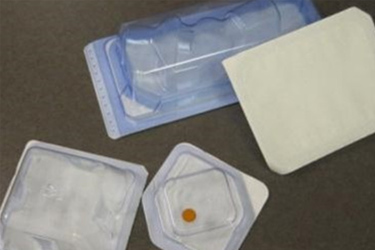Package Inspection Guidelines For Sterile Medical Products

Class III medical devices have a unique set of requirements and package characteristics that need a comprehensive approach to selecting the right inspection methods. A variety of inspection methods exist for medical package inspection that require a thorough understanding to ensure quality.
The predominant inspection method for medical device packaging has been manual visual inspection.While this approach is covered by an ASTM method (ASTM F1886), it may not be appropriate for certain applications and is limited in capability.Manual visual inspection has the capability to detect a 75-micron channel defect, but even the ASTM method F1886 outlines that the probability of detection ranges from 60% to 100%.This wide range of uncertainty does not provide the confidence needed for higher risk medical device packaging.
An operator’s ability to detect defects diminishes as the time spent inspecting packaging increases. Manual visual inspection effectiveness is also dependent on the package materials, lighting and the scope of inspection. Non-transparent and foil-barrier pouch formats are excluded from manual visual inspection as an option. Sandia National Laboratories produced the report “Visual Inspection: a Review of Literature”, which outlines in detail the challenges associated with visual inspection. When inspecting for seal quality and package integrity there are better alternatives.
Some offline leak detection methods can provide a quantitative assessment of seal quality, but they neglect to capture some of the most common seal defects with Class III medical packaging. Random seal defects will not be identified by testing peel strength or using other destructive approaches. The use of online non-destructive inspection methods is ideal for class III products, providing the ability to control quality with complete production lot data.
Get unlimited access to:
Enter your credentials below to log in. Not yet a member of Med Device Online? Subscribe today.
